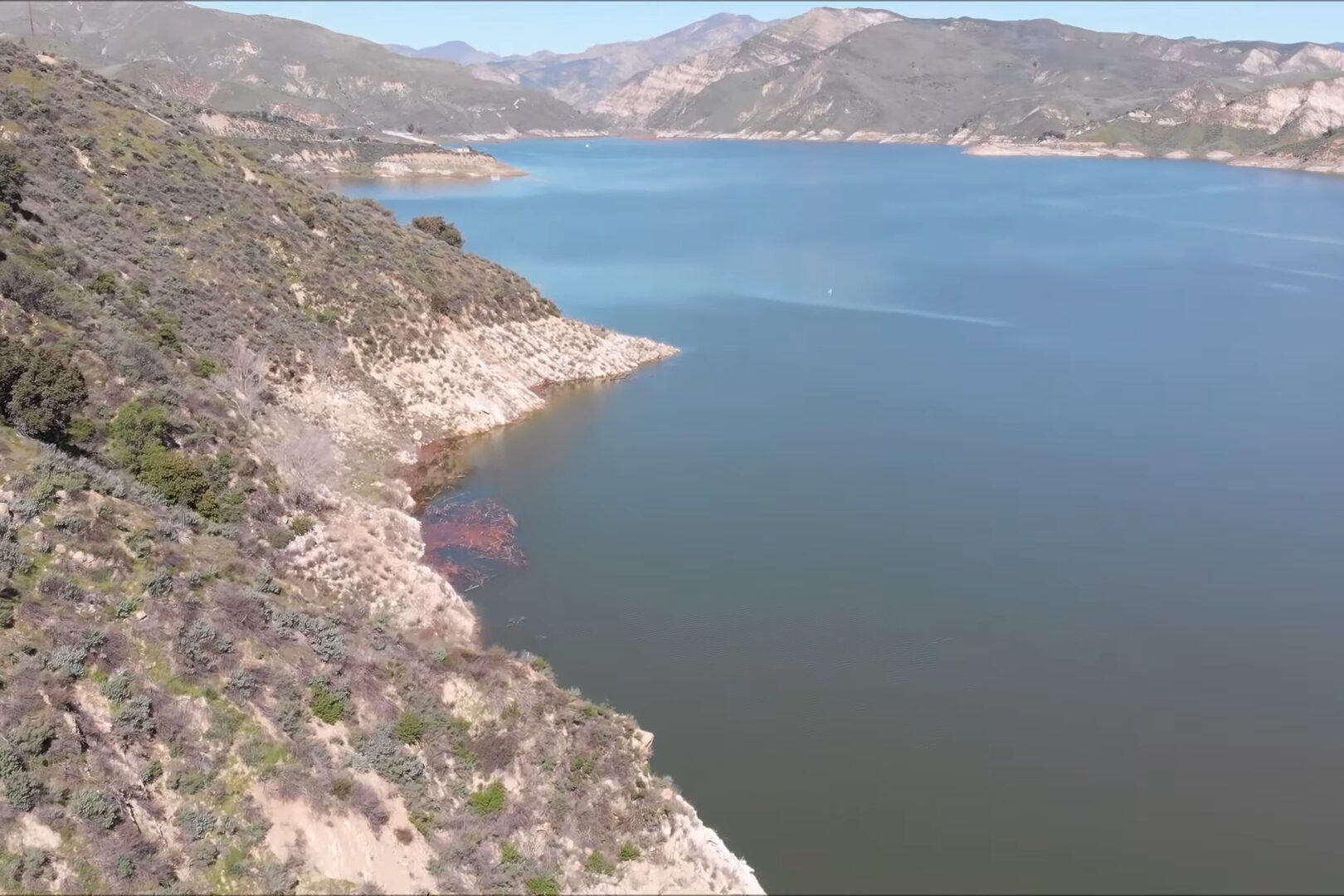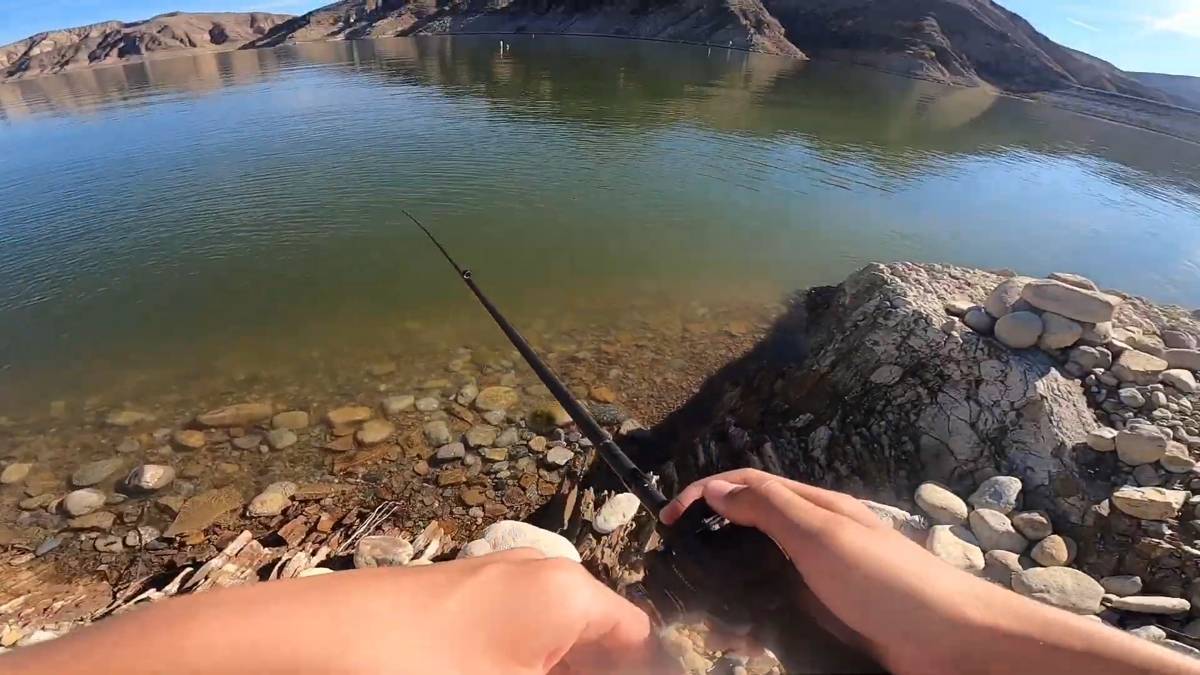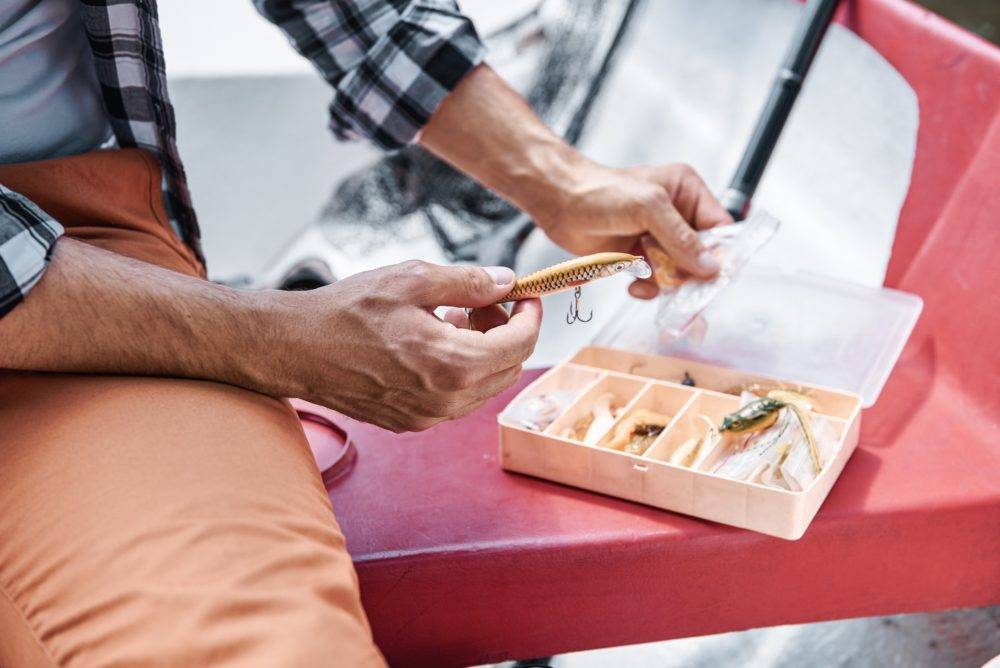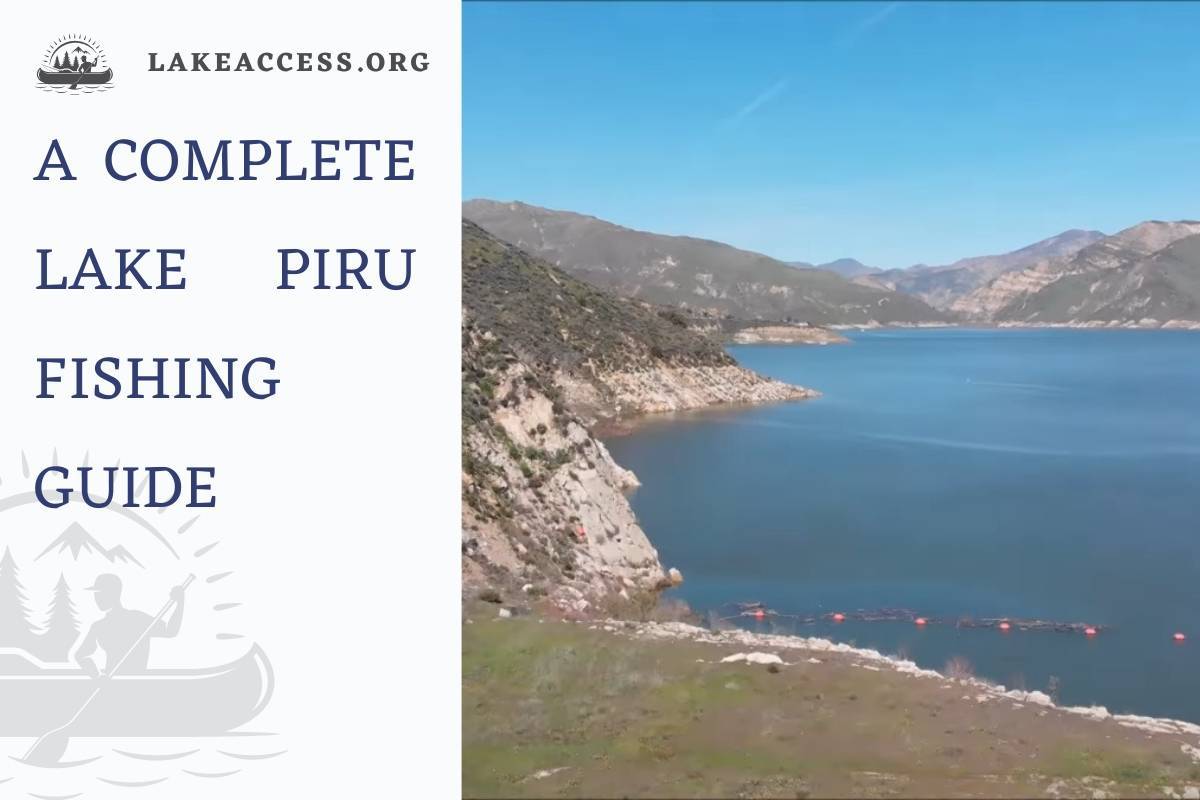Lake Piru is located in Ventura County, California, and covers over 1,200 acres. It’s a popular spot for fishing, boating, and other recreational activities. The lake is home to a variety of fish species, including largemouth bass, crappie, catfish, and bluegill.
Fishing Regulations at Lake Piru
Before you head out on your fishing trip, it’s essential to know the regulations for fishing at Lake Piru. The United Water Conservation District manages the lake, and they have specific rules in place to protect the fish population and the environment. Some of the regulations include:
- A valid California fishing license is required for all anglers over the age of 16.
- Only artificial lures or flies may be used for bass fishing from January 1 to June 14.
- The minimum size for bass is 12 inches, and the daily bag limit is five fish.
- Catfish have a daily bag limit of five fish and no size limit.
- Crappie and bluegill have a daily bag limit of 25 fish each, and there is no size limit.

Fish Species at Lake Piru
Lake Piru is home to a variety of fish species that attract anglers from all over the country. Some of the most popular fish species that can be caught at Lake Piru include:
- Largemouth Bass: Largemouth bass are the most sought-after fish species at Lake Piru. They can be found in shallow waters, especially during the spawning season.
- Smallmouth Bass: Smallmouth bass can be found in rocky areas and prefer clear, deep waters. They are known for their fighting spirit and are a favorite among anglers.
- Rainbow Trout: Rainbow trout are stocked in Lake Piru during the winter months and can be caught using a variety of baits and lures.
- Crappie: Crappies are found in the coves and are known for their delicious meat. They can be caught using live bait or small jigs.
- Bluegill: Bluegill can be found in weedy areas and are a great target for beginners. They can be caught using worms or small jigs.
| Fish Species | Description | Preferred Bait | Best Time to Fish |
|---|---|---|---|
| Largemouth Bass | A small freshwater fish with a blue-green coloration and a circular body shape | Plastic worms, crankbaits, jigs | Early morning or late afternoon |
| Rainbow Trout | A colorful fish with a pinkish stripe down its side, commonly stocked for recreational fishing | Powerbait, nightcrawlers, small spinners | Fall and winter months |
| Channel Catfish | A bottom-dwelling fish with a scaleless body and barbels around its mouth | Cut bait, stink bait, chicken liver | Nighttime or early morning |
| Bluegill | A small, freshwater fish with a blue-green coloration and a circular body shape | Small worms, crickets, grubs | Spring and summer months |
| Crappie | A small, silvery fish with black spots and a deep body | Jigs, minnows, small spinners | Early morning or late afternoon |
Best Time to Fish at Lake Piru
Timing is critical if you’re planning a fishing trip to Lake Piru. The best time to fish at Lake Piru is spring and fall. During these seasons, the water temperature is cooler, which makes the fish more active and more likely to bite. In contrast, during the summer months, the water temperature can reach up to 80 degrees, making fishing less productive.
To maximize your chances of catching fish, it’s also essential to consider the time of day. Early morning and late afternoon are the best times to fish, as the fish tend to be more active during these times. So, if you’re an early bird or a night owl, you might want to plan your fishing trip accordingly.
By timing your trip to Lake Piru during the right season and at the right time of day, you’ll increase your chances of having a successful fishing trip. So, be sure to do your research and plan accordingly.

Fishing Techniques at Lake Piru
There are several fishing techniques that are effective at Lake Piru. Here are a few to try:
1. Drop Shot Fishing
Drop shot fishing is a popular technique for bass fishing at Lake Piru. This technique involves suspending a bait above the bottom of the lake using a weight. It’s a great way to target bass that is holding in deep water.
2. Topwater Fishing
Topwater fishing is another popular technique for bass fishing at Lake Piru. This technique involves using lures that float on the surface of the water, imitating prey that is swimming near the surface. It’s a great way to catch bass that are feeding on the surface.
3. Bottom Fishing
Bottom fishing is an effective technique for catching catfish and other bottom-dwelling fish. This technique involves using a bait that is placed on the bottom of the lake, where the fish are feeding.
Best Baits to Use at Lake Piru
Choosing the right bait is essential for a successful fishing trip to Lake Piru. Here are some of the best baits to use:
- Soft plastic worms and creature baits are effective for bass fishing.
- Crankbaits and jerk baits are also effective for bass fishing.
- Nightcrawlers and chicken liver are effective for catfish.
- Small jigs and spinners are effective for crappie and bluegill.

FAQ
Which Baits and Lures Are Catching Fish at Lake Piru?
There are several baits and lures that have been successful in catching fish at Lake Piru. Plastic worms, crankbaits, and jigs have been popular choices for largemouth bass. Rainbow trout have been known to bite on power bait, nightcrawlers, and small spinners. Cut bait, stink bait, and chicken liver have been effective for channel catfish. Bluegill has been caught using small worms, crickets, and grubs, while crappie has been caught on jigs, minnows, and small spinners. It’s always a good idea to have a variety of baits and lures on hand and to experiment with different techniques to see what works best on any given day.
Do I need a fishing license to fish at Lake Piru?
A2. Yes, you need a valid California fishing license to fish at Lake Piru. You can purchase a license online or at a local sporting goods store.
Who can buy a Lake Piru Fishing License?
Anyone who meets the age and residency requirements set by the California Department of Fish and Wildlife (CDFW) can buy a Lake Piru fishing license. In general, anyone 16 years of age or older must have a valid fishing license to fish in California waters, including Lake Piru. There are different types of licenses available, including annual, short-term, and lifetime licenses, and there are separate fees for residents and non-residents. Licenses can be purchased online through the CDFW website or in person at various license agents throughout the state. It’s important to check and follow all local fishing regulations and restrictions before fishing at Lake Piru or any other California waterway.
How much does the Lake Piru fishing license cost?
The cost of a Lake Piru fishing license varies depending on the type of license and the residency of the applicant. Here are the current (as of 2023) prices for some of the most common licenses:
California resident annual fishing license: $52.66
Non-resident annual fishing license: $142.05
Two-day non-resident fishing license: $24.33
Ten-day non-resident fishing license: $49.94
What kind of fish does Lake Piru have?
Lake Piru is home to a variety of fish species, including largemouth bass, rainbow trout, channel catfish, bluegill, crappie, and sunfish. Largemouth bass is a popular game fish and is often the primary target for recreational anglers. Rainbow trout are commonly stocked in the lake and provide an opportunity for catch-and-release fishing. Channel catfish can be found in the deeper parts of the lake and are often caught using cut bait or stink bait. Bluegill, crappie, and sunfish are smaller species that can be caught using a variety of baits and lures.
Are there big fish in Lake Piru?
Yes, Lake Piru is known to have some big fish. Largemouth bass, in particular, can reach impressive sizes in the lake, with some weighing in at over 10 pounds. Rainbow trout are also stocked in the lake and can grow to be several pounds in weight. While channel catfish, bluegill, crappie, and sunfish are generally smaller species, there are still some larger individuals to be found. As with any fishing location, the size of the fish can vary depending on factors such as water conditions, time of year, and fishing pressure.

